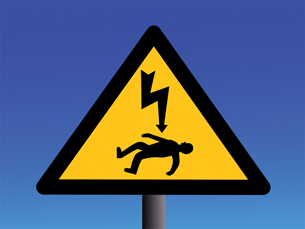Module 3
1. Module 3
1.39. Page 10
Module 3—Electrical Phenomena
 Reflect and Connect
Reflect and Connect
Now that you have a better understanding of voltage, you should be able to explain some of the statements that were made in Get Focused.
SC 16. Explain the following statement: “When you rub a balloon on your head, you can generate thousands of volts completely safely.”
 Self-Check Answer
Self-Check Answer
SC 16. The explanation has to do with the equation for potential difference.
![]() ; therefore,
; therefore,
ΔEp = ΔVq
The electric potential energy that is available to do work will be low when only a very small amount of charge (q) experiences the relatively high potential difference (ΔV). Rubbing a balloon on your head does exactly this—it produces a very high voltage for very, very few charges. So when the balloon “discharges,” the amount of energy is very small and harmless.
In general, sources of voltage are dangerous when large numbers of charges are involved because the energy is transferred through the motion of the charges. High-voltage power lines are certainly in this category because large numbers of charges have been given huge amounts of energy. It is not unusual for some power lines to operate at 250 kV. This combination of extremely high voltage with a huge number of charges makes these structures particularly dangerous. It’s important to have a comprehensive safety program when working near high-voltage power lines that conduct significant amounts of charge and energy.

© Stephen Finn/shutterstock

© Epcor Utilities Inc.
 Module 3: Lesson 5 Assignment
Module 3: Lesson 5 Assignment
Remember to submit your Module 3: Lesson 5 Assignment to your teacher.